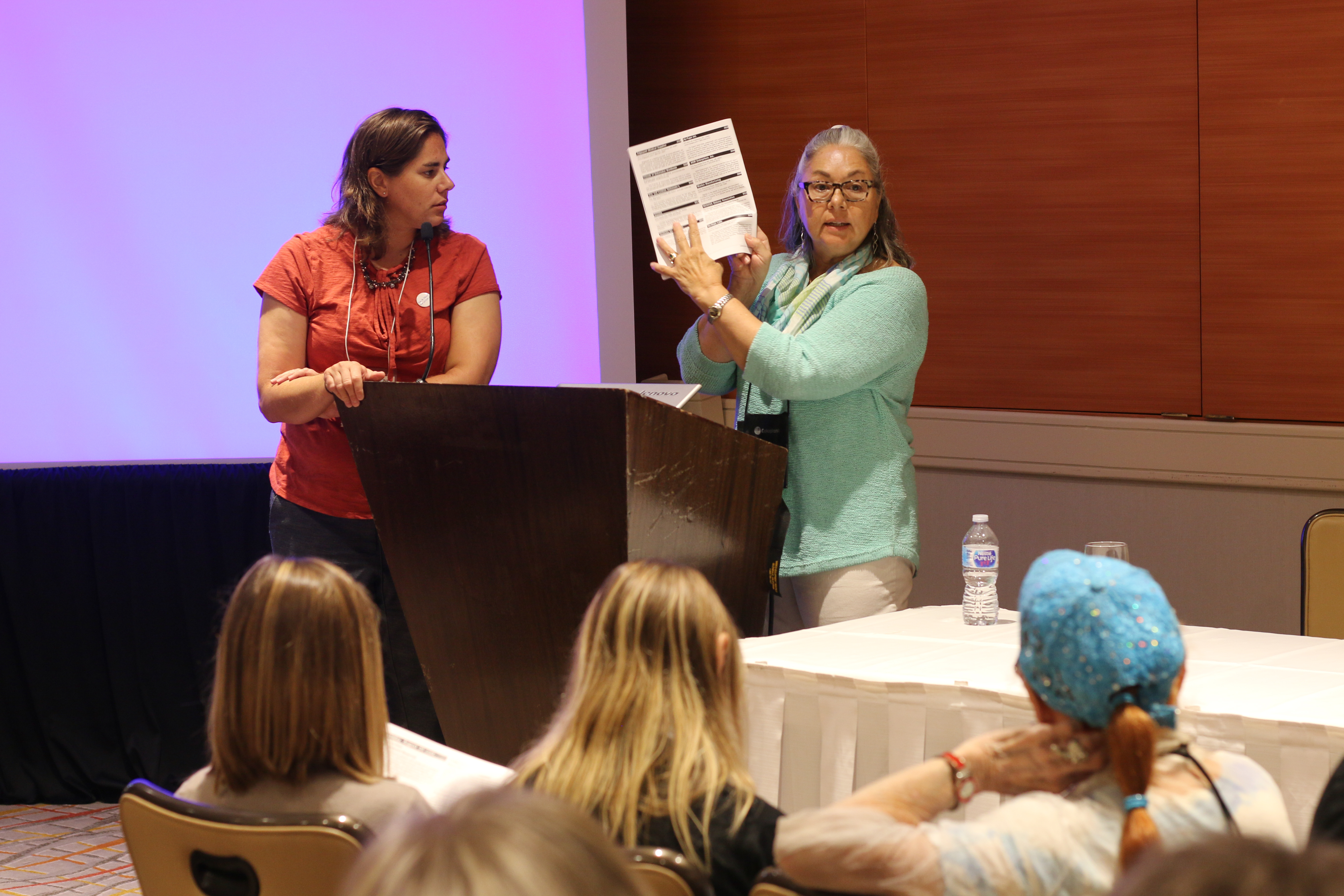By Karin, Newbieostomy
Whether you’ve been a part of the ostomy community for 20+ years or joined it yesterday, United Ostomy Associations of America’s (UOAA) National Conference is worth attending. There are two main themes that come up time and time again when talking to people about their experiences at the conference: education and friendship. You can read about the bonds that are formed at the UOAA conference in the post Ostomy Camaraderie.
Regarding education, it doesn’t matter if you just got your ostomy or you’ve had it for years, there’s always something new to learn because technology advances and our bodies change over time. If you’re like me, you’ve scoured the internet looking for answers to all your questions and have probably found quite a few answers hopefully here on ostomy.org or on my blog newbieostomy.com, but you might still have some other questions that are left unanswered.
Queue UOAA’s National Conference. Held every two years UOAA does a fabulous job of bringing in professionals to share the most up-to-date research and information. At the last conference in Irvine, California they brought in doctors, surgeons, WOC nurses, nurses who also have an ostomy, a geneticist, a pharmacist, a psychologist, scientists, a dietician, TSA officials, and people with inspiring stories, and probably others that I’ve missed – all who are happy to answer your specific questions and share their knowledge. That’s quite a toolbox for us ostomates to have all in one place! Here is a tentative program of what to expect at the upcoming conference August 6-10, 2019 in Philadelphia, PA.

Conference attendees speaking directly to TSA agents about traveling with an ostomy.
This year there are even suggested sessions and reserved meeting space for people with similarities. There is a Young Adult Track (Discount if 25 and under), Pediatrics Track and a Caregivers Track, so feel free to bring your family or partner along as well.
“As a first-timer it was great, so much info.” – Eric, first-timer
I lean toward the studious side, so I brought a notepad and paper to every session I attended to help me soak up and remember as much knowledge as possible. In addition to (or in lieu of) taking notes during sessions, I’ve taken pictures of the slides I thought were really valuable.
Don’t want to draw attention to yourself with your hefty notebook or by holding your camera up every time there’s a new slide? Some speakers might also be willing to share their powerpoint presentations with you if you reach out to them after the event, or they might let you record the sessions if you get there early enough to ask permission.
“I have learned more in these few days than I have in the almost 6 years with my permanent ostomy.” – Daniel, first-timer
 Wow. Right?
Wow. Right?
That’s pretty powerful.
With dozens of sessions offered, it’s can be hard to choose which one to go to if a couple of them conflict with each other. Luckily, each person has their own needs and interests so it’s likely that someone you know will go to a different session from you, which gives you both an opportunity to share what you’ve learned.
You might think that the sessions are only useful to a first timer, but not so. Derek has gone to every conference and has had his ostomy for almost 20 years, yet he still chooses to attend the “Basic Colostomy” session because there’s always something to learn and the other people who attend might ask a question he hasn’t thought of. While there are many repeat (basics) sessions offered every conference, the UOAA does a great job of bringing in new speakers to talk on different subjects as well. This year UOAA is also highlighting talks that will be of interest to both the new and experienced ostomate.
Like Derek, I also found value in the sessions from this conference even though I went to a ton of sessions at my first conference in 2015. I was happy to see new sessions offered, and to be able to attend a couple sessions that had conflicted with something else I’d prioritized hearing. I went to at least one repeat session that I noticed was really similar, but even there, I felt like I gained new knowledge and perspective because my brain can only hold so much information (even if we take notes).
In addition to attending the educational sessions and exploring the ostomy product exhibit hall, there was a hospitality area open every day where you could put a pushpin in the map of the United States to show where you’d come from, ask questions of local volunteers, and talk to members of the UOAA Advocacy and Communications team. There was also a free stoma clinic where attendees could sign up for an appointment to meet with a WOC nurse to troubleshoot pouching and skin troubles. On top of that, there were great speakers at the opening and closing ceremonies, and a really fun closing night party complete with dessert, dancing, and a perfectly executed fashion show.
This year the conference is at the Philadelphia 201 Hotel in the heart of the city and there are even more social events such as a free improv comedy show and music act, a Roaring 1920s Casino Night, and plenty of free time to explore an awesome city with new friends.



